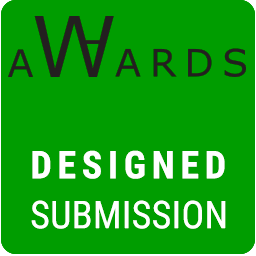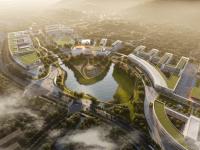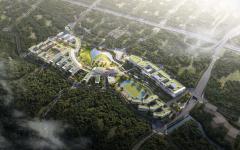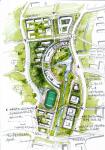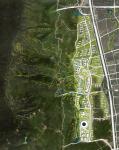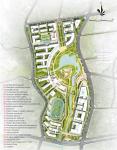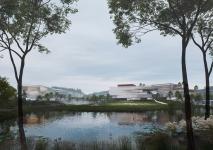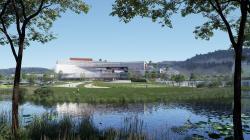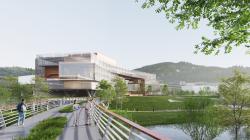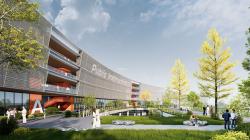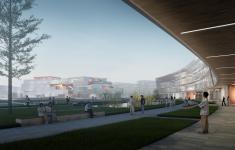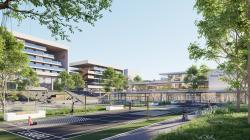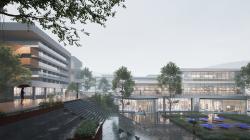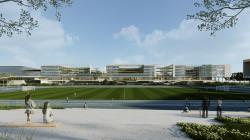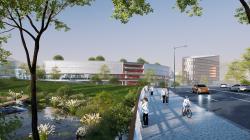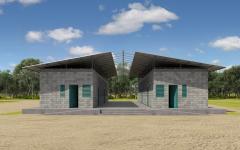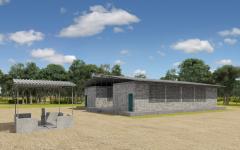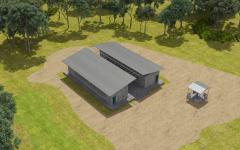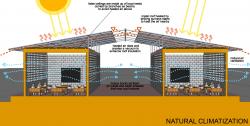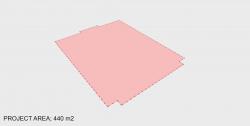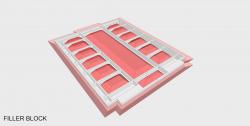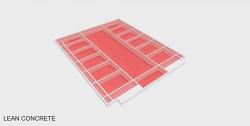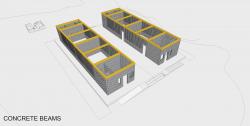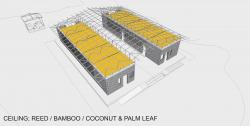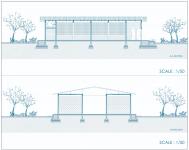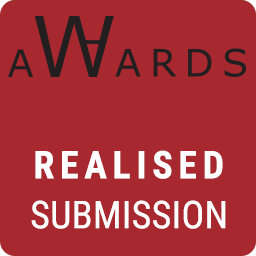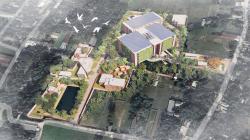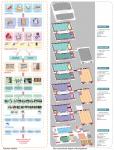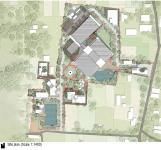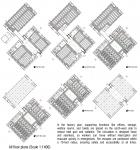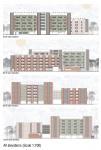World Architecture Awards 10+5+X Submissions
World Architecture Awards Submissions / 53rd Cycle
Vote button will be active when the World Architecture Community officially announces the Voting period on the website and emails. Please use this and the following pages to Vote if you are a signed-in registered member of the World Architecture Community and feel free to Vote for as many projects as you wish.
How to participate
WA Awards Submissions
WA Awards Winners
Architectural Projects Interior Design Projects
Architectural Projects Interior Design Projects
Conceptual Planning Scheme for Chongqing University's Wisdom Valley Campus
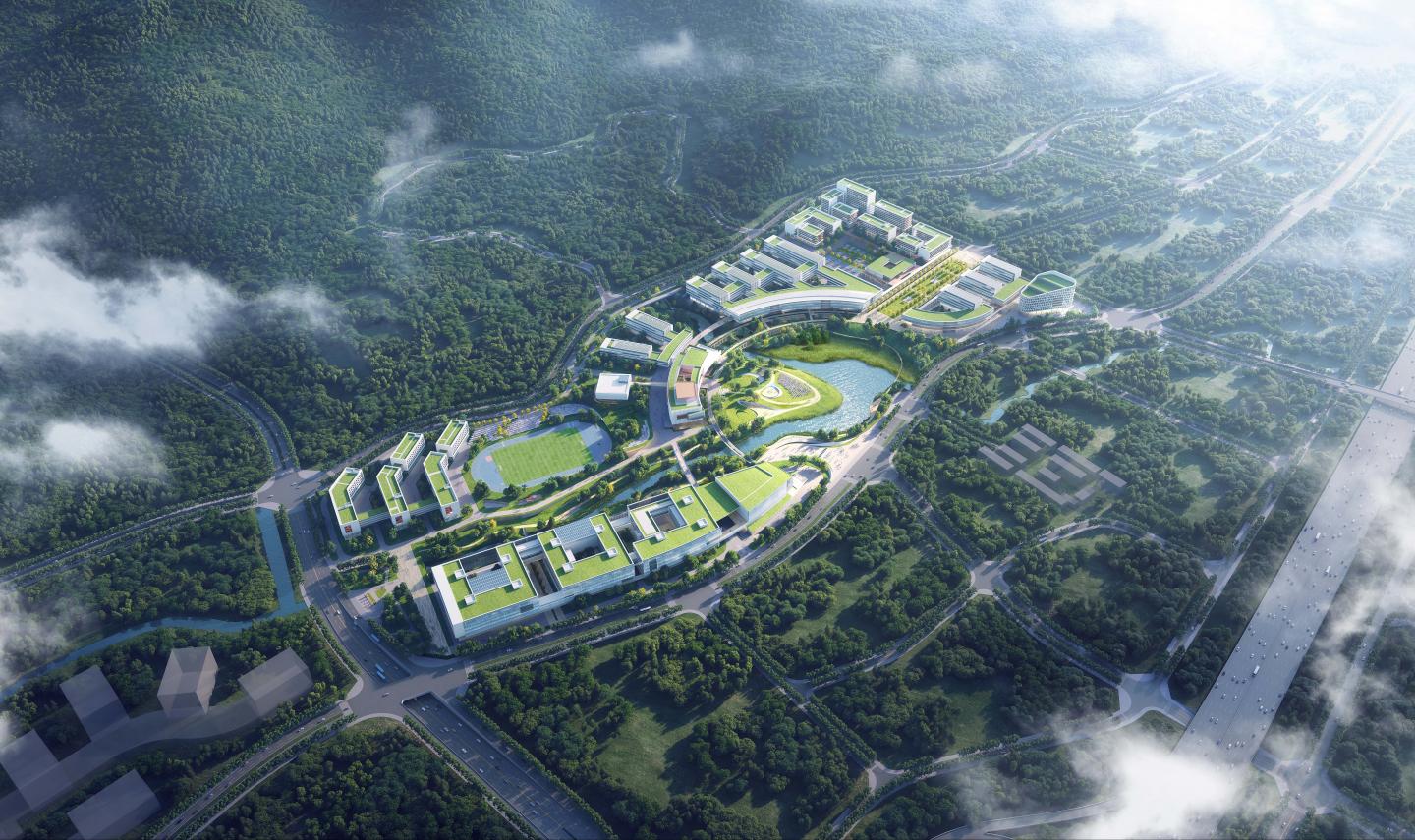

As the new campus for one of the best universities in Western China, designed to accommodate 10,000 faculty and students in the future, the primary design goal for the Chongqing University Wisdom Valley Campus is to create a future campus that integrates nature, ecology, education, technology, and innovation. Concurrently, the campus is intended to serve as a vital, organic component of the Chongqing Science City, a major new science and technology hub in Western China.
The project site reflects the natural geographical characteristics of Chongqing, the world-renowned mountain metropolis: the environment of coexisting mountains and water fostered the development of this site. Jinyun Mountain on the west side serves as the backdrop for the campus with its continuous mountain ranges. The confluence of the Huxi River and Yangjiagou Stream forms a natural peninsula known as Qinglongzui.
The master plan is dedicated to transforming the conventional closed university campus model. The university of the future belongs not only to its faculty and students but also to the city. The campus layout, characterized by a well-balanced mix of density and open, grand gestures, creates an open space facing the city in the pre-campus area on the east side, forming a massive C-shaped "Academic Loop." This loop connects the various campus zones while actively engaging the city, promoting interaction and co-existence.
Under the principle of "Design Following Nature," the naturally formed confluence of the two rivers within the campus is enlarged into an ecological peninsula. This peninsula is designated as the Campus Energetic Core(CEC), housing landmark buildings such as key laboratories, the library, and the auditorium. Together with natural elements like the lake, sparse woods, and lawns, they form the ecological heart of the campus.
The design creates a campus spatial model that breaks down disciplinary barriers. The Academic Loop consists of a series of public classrooms and laboratories, offering high efficiency and intensive use. Faculty and students from colleges such as Optoelectronic Engineering, Microelectronics and Communication Engineering, and Intelligent Connected Vehicles will study here, promoting disciplinary integration and cross-disciplinary research.
Furthermore, the Academic Loop is also a Three-Dimensional Efficiency Ring. By scientifically utilizing the elevation differences through a three-dimensional integrated transportation strategy, it connects three distinct spatial layers: the underground vehicular flow, the ground-level pedestrian flow, and the overhead academic public platform.
The longitudinal campus public space running north-south through the campus forms two major campus composite axes, linking teaching and research, health and sports, and residential living. The Waterfront Public Vitality Belt on the south shapes both banks of the Huxi River into a water-friendly social interaction space. The research and office buildings on the east bank adopt a modular spatial model to meet flexible development needs. The Northern Campus Boulevard carries the campus's century-long history, incorporating cultural landscapes to organically integrate culture and history with the modern campus space.
Site Area: 5,900,000㎡ (39.3 hectares)
Construction Gross Area: 465,000㎡
Chu Donozhu, Yang Yang, Chu Longfei, Guan Shihan, Yang Yue, Yu Yan, Zheng wenchong, Deng Yuwen, Liu Xueyang, Zhou lingzhi, Shen Qingzhi, Li Baopeng, Zhang Songming, Wang Dagang
The project site reflects the natural geographical characteristics of Chongqing, the world-renowned mountain metropolis: the environment of coexisting mountains and water fostered the development of this site. Jinyun Mountain on the west side serves as the backdrop for the campus with its continuous mountain ranges. The confluence of the Huxi River and Yangjiagou Stream forms a natural peninsula known as Qinglongzui.
The master plan is dedicated to transforming the conventional closed university campus model. The university of the future belongs not only to its faculty and students but also to the city. The campus layout, characterized by a well-balanced mix of density and open, grand gestures, creates an open space facing the city in the pre-campus area on the east side, forming a massive C-shaped "Academic Loop." This loop connects the various campus zones while actively engaging the city, promoting interaction and co-existence.
Under the principle of "Design Following Nature," the naturally formed confluence of the two rivers within the campus is enlarged into an ecological peninsula. This peninsula is designated as the Campus Energetic Core(CEC), housing landmark buildings such as key laboratories, the library, and the auditorium. Together with natural elements like the lake, sparse woods, and lawns, they form the ecological heart of the campus.
The design creates a campus spatial model that breaks down disciplinary barriers. The Academic Loop consists of a series of public classrooms and laboratories, offering high efficiency and intensive use. Faculty and students from colleges such as Optoelectronic Engineering, Microelectronics and Communication Engineering, and Intelligent Connected Vehicles will study here, promoting disciplinary integration and cross-disciplinary research.
Furthermore, the Academic Loop is also a Three-Dimensional Efficiency Ring. By scientifically utilizing the elevation differences through a three-dimensional integrated transportation strategy, it connects three distinct spatial layers: the underground vehicular flow, the ground-level pedestrian flow, and the overhead academic public platform.
The longitudinal campus public space running north-south through the campus forms two major campus composite axes, linking teaching and research, health and sports, and residential living. The Waterfront Public Vitality Belt on the south shapes both banks of the Huxi River into a water-friendly social interaction space. The research and office buildings on the east bank adopt a modular spatial model to meet flexible development needs. The Northern Campus Boulevard carries the campus's century-long history, incorporating cultural landscapes to organically integrate culture and history with the modern campus space.
Site Area: 5,900,000㎡ (39.3 hectares)
Construction Gross Area: 465,000㎡
Chu Donozhu, Yang Yang, Chu Longfei, Guan Shihan, Yang Yue, Yu Yan, Zheng wenchong, Deng Yuwen, Liu Xueyang, Zhou lingzhi, Shen Qingzhi, Li Baopeng, Zhang Songming, Wang Dagang
Rural Learning House


The project is designed for students to study in rural areas, villages and mountains where there is no school. In these rural areas where there are very few households outside the city, there is often no school structure for education. Even the smallest school structures in existing cities remain very large compared to the population in these rural areas. For this reason, these learning houses & schools have been designed with a minimum budget so that children living in rural areas and growing up here have at least an educational structure.In the project, it is aimed to be built with local materials without using any external materials. In this frame, the single-storey building consists of a block wall and a reinforced concrete beam to be placed on it. The roof structure that will come on the reinforced concrete beam will protect the structure from the excessive heat of the sun.The structure, which consists of 2 blocks and 4 classrooms, connects it with the roof. For natural ventilation, gaps were created with bricks on the wall of the building. The sustainability of education will be ensured by the expansion of education venues in rural areas, which will be built with this minimum budget.2 water tanks in the building will be used to meet the water needs of the building. A water well is also considered on the side of the building to use the natural underground water.Small gaps repeated on both walls of each block of the building also contribute to clean ventilation and cooling by passing through the building without the wind hitting the building. In this respect, these small spaces not only provide natural light intake, but also create natural cooling. With this aspect, the building was designed with a completely sustainable architecture.
Block wall structure
Selim Senin
Block wall structure
Selim Senin
Hefei Nanmen Primary School Yingzhou Campus
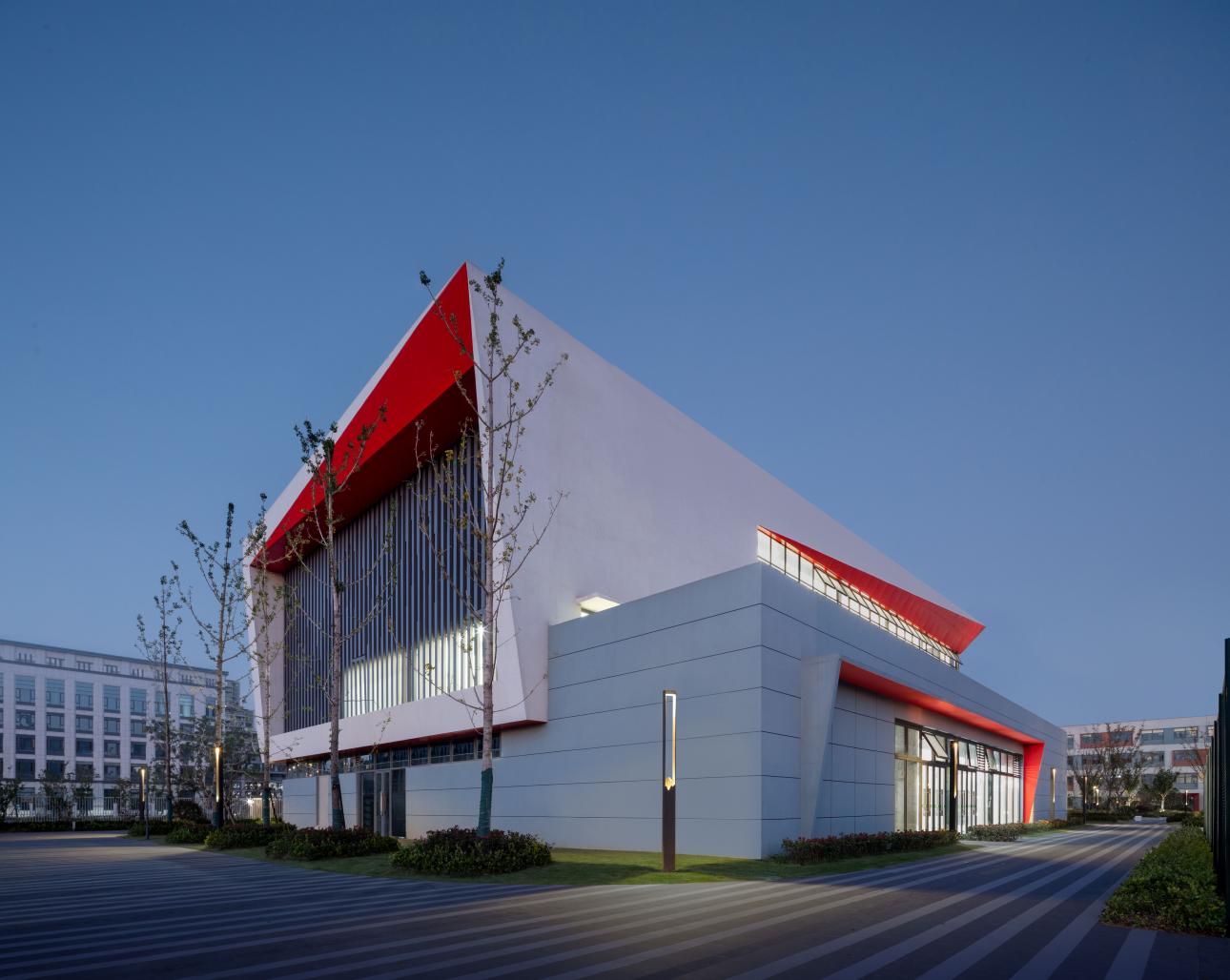

The project is located in the Southern New District of Fuyang City and will be named Qinghe Road First Primary School upon completion. It primarily consists of an underground parking garage, teaching buildings, a cafeteria, an indoor sports ground, and an administrative office building. Leveraging the orientation characteristics of the site, the design adopts a regular, compact, and highly efficient layout. By making full use of the site's depth, the internal building spacing is appropriately expanded to ensure the teaching buildings receive ample sunlight. Additionally, the teaching area, sports area, and living area are clearly defined.
The E-shaped layout facing the interior of the school forms two large semi-enclosed courtyards, creating a courtyard-style environment. Meanwhile, the eastern corridor presents a continuous urban facade along the city road. The school's southern entrance plaza faces the main city road, serving as the primary gathering area for parents dropping off and picking up their children. This design also provides an effective buffer to the city's main road, while a secondary entrance is set up on the eastern side. The two inner courtyards face the sports field and, together with the main landscape axis of the southern entrance, form recreational spaces for students, creating a comfortable, relaxed, and pleasant campus environment.
The architectural design features a light gray color scheme as the main tone, complemented by sections of dark gray walls and dark gray air conditioning louvers. Accents of colorful components are appropriately incorporated to create a lively and elegant architectural style. The four courtyards on the eastern side are enhanced with vibrant color accents, forming engaging learning and activity corners.
Location: China, Fuyang
Area:20000 sqm
Far:0.4
Client: Fuyang Education Bureau
Hongkai Li, Ya Yang, Jiachen Fei, Boyan Chen, Songtian Zhang, Qinlin Qin, Yuanhang Wang, Chunyang Ma
The E-shaped layout facing the interior of the school forms two large semi-enclosed courtyards, creating a courtyard-style environment. Meanwhile, the eastern corridor presents a continuous urban facade along the city road. The school's southern entrance plaza faces the main city road, serving as the primary gathering area for parents dropping off and picking up their children. This design also provides an effective buffer to the city's main road, while a secondary entrance is set up on the eastern side. The two inner courtyards face the sports field and, together with the main landscape axis of the southern entrance, form recreational spaces for students, creating a comfortable, relaxed, and pleasant campus environment.
The architectural design features a light gray color scheme as the main tone, complemented by sections of dark gray walls and dark gray air conditioning louvers. Accents of colorful components are appropriately incorporated to create a lively and elegant architectural style. The four courtyards on the eastern side are enhanced with vibrant color accents, forming engaging learning and activity corners.
Location: China, Fuyang
Area:20000 sqm
Far:0.4
Client: Fuyang Education Bureau
Hongkai Li, Ya Yang, Jiachen Fei, Boyan Chen, Songtian Zhang, Qinlin Qin, Yuanhang Wang, Chunyang Ma
Jrai Culture Museum Of Rituals And Festivals


CONTEXT.
The Central Highlands - vast, sunlit, and wind-swept - stands as a motherland nurturing diverse ethnic communities, each preserving values that enrich Vietnam’s cultural mosaic. Amid this expanse, Jrai festival traditions rise like a radiant forest bloom. Yet this sacred heritage has long lingered behind a delicate veil - "seen" and "heard", but seldom "lived" and "felt".
PROPOSAL.
From afar, the museum emerges as part of the landscape - woven into pine forests, molded by the land’s natural contours. Its form reinterprets the iconic Rong house, distilled into a circular geometry enclosing a central courtyard. This void is not absence but essence - a space of "Convergence", echoing the communal heart where rituals unfold. Here, architecture becomes both stage and storyteller.
DESIGN PRINCIPLES.
Guided by the ethos: “A festival is a journey - so is the act of preserving it,” the museum choreographs a sequential narrative. From threshold to culmination, the path moves through emotional gradients: "Release" – "Awakening" – "Recognition" – "Resonance". This is not passive viewing but embodied experience - crafted through light and shadow, sound and texture, where every sense becomes a vessel of memory.
CONCEPT.
The architecture embraces Centripetal Orientation - drawing energy inward, around the ceremonial core, much like the circular Xoang dance encircling the Ceremonial Neu Pole. These spatial metaphors root the design in cultural archetypes while translating them into contemporary expression.
SIGNIFICANCE.
The Jrai Ethnic Festival Cultural Museum stands as an emblem of gratitude to the motherland, a monumental archive safeguarding intangible heritage while amplifying the poetic pulse of the Central Highlands. It is not merely a container of artifacts but an immersion - a space where tradition breathes, and the visitor becomes part of its rhythm. Here, "Convergence" is more than geometry; it is spirit - of people, of culture, of time eternal.
LOCATION.
Bien Ho Lake, Bien Ho Commune, Pleiku City, Gia Lai Province, Vietnam.
GROSS FLOOR AREA.
16,510 m² (Comprising 2 principal exhibition floors and 1 semi-basement public floor).
DESIGN BASIS.
Material and Spiritual Essence define every gesture:
- The "North–South axis", revered in Jrai belief, anchors the master plan—aligning cultural symbolism with environmental logic.
- "Roof proportions are accentuated", reflecting Jrai cosmology in which the soaring roof shelters the divine—a signature architectural expression reimagined in the museum’s design.
- Raw, tactile materials—timber, stone, earth—root the structure in its land, honoring the Jrai conviction that the communal house shelters both humanity and divinity.
- Layered terraces reenact the climb of the highlands—the ancient paths of toil and ritual.
- Silent "funerary guardians" now stand sentinel at the entrance, invoking awe and memory.
- "Interactive spaces resonate with the visitor", evoking the cadence of gongs, the vastness of the forests, and stimulating hearing, touch, and sight in a unified sensory dialogue.
- The "Ceremonial Neu Pole", once the axis of festival life, now anchors the architectural form—a symbolic core of "Centripetal Orientation" and cultural convergence.
Other cultural imprints unfold through curated imagery and sculpted space.
Author: Gia Tuan Le
Academic Supervisor: Dr.Arch.Phu Cuong Pham
The Central Highlands - vast, sunlit, and wind-swept - stands as a motherland nurturing diverse ethnic communities, each preserving values that enrich Vietnam’s cultural mosaic. Amid this expanse, Jrai festival traditions rise like a radiant forest bloom. Yet this sacred heritage has long lingered behind a delicate veil - "seen" and "heard", but seldom "lived" and "felt".
PROPOSAL.
From afar, the museum emerges as part of the landscape - woven into pine forests, molded by the land’s natural contours. Its form reinterprets the iconic Rong house, distilled into a circular geometry enclosing a central courtyard. This void is not absence but essence - a space of "Convergence", echoing the communal heart where rituals unfold. Here, architecture becomes both stage and storyteller.
DESIGN PRINCIPLES.
Guided by the ethos: “A festival is a journey - so is the act of preserving it,” the museum choreographs a sequential narrative. From threshold to culmination, the path moves through emotional gradients: "Release" – "Awakening" – "Recognition" – "Resonance". This is not passive viewing but embodied experience - crafted through light and shadow, sound and texture, where every sense becomes a vessel of memory.
CONCEPT.
The architecture embraces Centripetal Orientation - drawing energy inward, around the ceremonial core, much like the circular Xoang dance encircling the Ceremonial Neu Pole. These spatial metaphors root the design in cultural archetypes while translating them into contemporary expression.
SIGNIFICANCE.
The Jrai Ethnic Festival Cultural Museum stands as an emblem of gratitude to the motherland, a monumental archive safeguarding intangible heritage while amplifying the poetic pulse of the Central Highlands. It is not merely a container of artifacts but an immersion - a space where tradition breathes, and the visitor becomes part of its rhythm. Here, "Convergence" is more than geometry; it is spirit - of people, of culture, of time eternal.
LOCATION.
Bien Ho Lake, Bien Ho Commune, Pleiku City, Gia Lai Province, Vietnam.
GROSS FLOOR AREA.
16,510 m² (Comprising 2 principal exhibition floors and 1 semi-basement public floor).
DESIGN BASIS.
Material and Spiritual Essence define every gesture:
- The "North–South axis", revered in Jrai belief, anchors the master plan—aligning cultural symbolism with environmental logic.
- "Roof proportions are accentuated", reflecting Jrai cosmology in which the soaring roof shelters the divine—a signature architectural expression reimagined in the museum’s design.
- Raw, tactile materials—timber, stone, earth—root the structure in its land, honoring the Jrai conviction that the communal house shelters both humanity and divinity.
- Layered terraces reenact the climb of the highlands—the ancient paths of toil and ritual.
- Silent "funerary guardians" now stand sentinel at the entrance, invoking awe and memory.
- "Interactive spaces resonate with the visitor", evoking the cadence of gongs, the vastness of the forests, and stimulating hearing, touch, and sight in a unified sensory dialogue.
- The "Ceremonial Neu Pole", once the axis of festival life, now anchors the architectural form—a symbolic core of "Centripetal Orientation" and cultural convergence.
Other cultural imprints unfold through curated imagery and sculpted space.
Author: Gia Tuan Le
Academic Supervisor: Dr.Arch.Phu Cuong Pham
Loops of Life – Designing an Eco-Friendly Sweater Factory
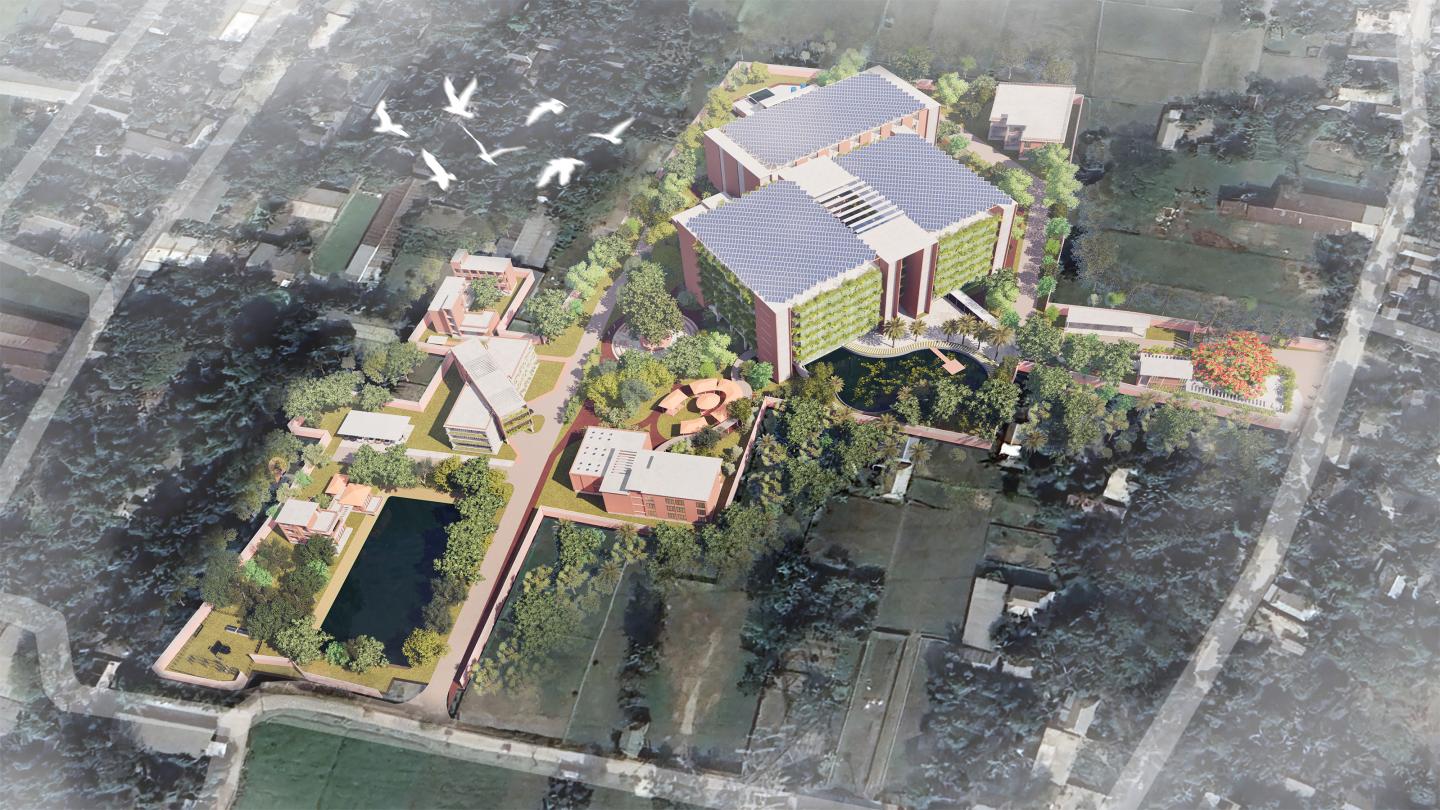

Every thread has a story — and so does every building. This project began not from a sketch or a line on paper, but from a simple thought: how can a factory, a place of labor and production, breathe, feel, and connect like a living being?
In the heart of Bangladesh’s industrial landscape, factories often rise as cold, imposing structures — efficient, but distant. They hum with machinery yet lack the warmth of human touch. As an architecture student, I often wondered if sustainability could be more than a checklist of green systems — if it could feel human. That thought became the first loop in what I later called “Loops of Life.”
The idea was simple yet profound: just as a sweater is nothing without its loops, a factory is nothing without its people and the planet. I wanted to weave together nature, labor, and architecture — to knit them into one continuous loop where every element supports the other.
The Birth of the Concept – Loops of Life.
The “Loops of Life” concept was inspired by the process of knitting itself. A sweater comes alive through countless loops — each thread interlinked, each connection vital. In the same way, this factory was imagined as a series of interconnected systems: human, environmental, and architectural.
The circular planning mirrors this metaphor. The flow of production — from raw material intake to packaging — follows a seamless loop. No abrupt corners, no broken transitions. Movement happens naturally, minimizing energy loss and confusion. Every department connects logically, yet softly — like stitches held together by care.
Around these production loops, green zones spiral and interlace — courtyards, planters, and terraces designed to breathe life into the spaces where workers spend most of their day. Nature isn’t just decoration here; it’s a co-worker, a silent companion.
The Human Connection
Factories are often designed for machines — not for the people who keep them running. That realization struck me deeply. I wanted every worker to feel that they weren’t trapped inside a box of concrete and steel but were part of a living ecosystem.
So the design became human-centric. Skylit cafeterias, shaded breakout terraces, and green corridors break the monotony of industrial repetition. Each workstation was planned with visual connectivity to nature, ensuring that workers could see green, breathe fresh air, and feel sunlight filtered through soft foliage.
The facade became the project’s emotional canvas. Inspired by Le Corbusier’s “Brise-Soleil,” the façade was designed using the Venturi effect — a principle that accelerates airflow by narrowing its path. The windward side of the jali remains wide, while the inner side narrows, creating a cooling breeze inside the workspaces.
At the base, angled planters guide the wind, optimizing natural ventilation. The outer vegetation acts as a natural dust filter, reducing air pollutants from the industrial surroundings. Extended 7-foot slabs shield the interiors from direct sunlight, maintaining comfort without artificial cooling. It’s a façade that breathes, shades, and protects — a living skin of the building.
Inspiration from Nature
My truest inspiration came from nature itself. I wanted to bring back the essence of connection — between people, ground, and sky. The green facades were designed not just as sustainable features, but as emotional ones.
In this tropical climate, I wanted workers to feel the rhythm of nature — to see leaves fall in autumn, to sense the soft shift of light as the seasons change. The falling leaves, the blooming greens, the shadows dancing across the floor — all remind them they’re not detached from the earth even while working inside a factory.
Architecture, I believe, should heal — not just perform. It should remind people of their place in the grand cycle of life.
Breathing Through Design
The courtyards act as lungs of the factory. They channel cross-ventilation through naturally designed wind tunnels and light wells. These spaces aren’t empty voids — they’re gatherings of life, places where air, light, and laughter coexist.
Every courtyard tells a different story — one holds a small tree where workers often rest in the shade, another opens toward a water body reflecting the changing sky. The rainwater harvesting system completes the cycle — collecting, filtering, and reusing water for landscaping and washrooms.
This closed-loop system mirrors the project’s philosophy — nothing wasted, everything reused, just like the loops of a sweater.
Visual Softness in Industrial Scale
Factories are usually hard-edged and intimidating. I wanted to challenge that language. So I softened the architecture — curving corners, layering greens, and blurring boundaries.
The vegetation on the outer layer acts as both camouflage and comfort. From outside, the massive industrial structure appears gentle, almost hidden behind layers of trees and vines. At eye level, the green buffer erases the factory’s dominance, creating an illusion of a garden rather than a production site.
From above, the roof garden acts as a cooling cap, absorbing heat and creating micro-habitats for birds and insects. The entire complex feels like a piece of land that breathes — not one that’s been conquered.
Philosophy – Weaving the Whole Together
Every element in this design is a stitch — from the planter-lined corridors to the rainwater channels, from the worker lounges to the green roof. And just like a sweater, each stitch matters.
The factory is not designed to impress with grandeur, but to express humility — to blend, to nurture, and to breathe.
The architecture doesn’t shout sustainability — it whispers it. Through textures, through air movement, through the feeling of soil beneath one’s feet.
I believe true sustainability lies not just in energy efficiency, but in emotional efficiency — in making people care for their surroundings. When a worker waters a plant, when they rest under a tree they saw growing, when they see sunlight painting the walls differently each season — that’s sustainability taking root.
The Journey
Designing this project was a personal reflection as much as it was an academic challenge. Growing up in Bangladesh, surrounded by factories and yet rarely seeing beauty within them, I wanted to prove that industrial architecture can be compassionate.
I spent days observing how workers moved, how they rested, how they found moments of relief during long shifts. I realized architecture could make those moments better — with shade, with air, with green.
Each decision in this design — the looped plan, the angled planter, the wide slabs — was not made to be radical, but to be kind.
Conclusion – A Stitch Toward the Future
This project stands as a small act of resistance — against harsh industrial realities, against soulless sustainability. It’s a proposal for an architecture that doesn’t separate production from peace, or progress from nature.
Just like knitting, architecture too is a meditative act. Loop by loop, space by space, we build something whole. And maybe, through designs like this, we can remind ourselves — that we are all loops in the same fabric of life.
“Loops of Life” is not just a factory. It’s a metaphor for connection — between man and machine, between nature and structure, between the ground and the soul.
1. Climate Response & Orientation
The factory is located in a tropical climate where heat and humidity dominate most of the year. The building is oriented along the north-south axis, minimizing east–west exposure. This reduces glare and direct solar gain during peak hours.
Supporting functions such as offices, storage, welfare rooms, and toilets are placed on the north-west side to buffer working areas from harsh western radiation.
2. Passive Design Strategies
The project applies passive ventilation and daylighting principles throughout:
Cross ventilation is achieved through courtyards, air shafts, and wind tunnels that pull cool air from shaded sides.
The Venturi (Siphon) Effect is applied on the façade to accelerate wind flow, improving indoor air quality and comfort.
Light wells and skylights ensure evenly diffused daylight, reducing the need for artificial lighting.
3. Facade System & Shading Design
The façade design was inspired by Le Corbusier’s Brise-Soleil and adapted to local climatic needs.
Shading jalis have wide openings on the windward side and narrower inner edges to channel airflow (Venturi effect).
Planters at the base are angled to direct wind movement while reducing dust particles from outside.
Extended 7-foot concrete slabs block direct sunlight and rain while allowing filtered light to enter.
Green façades cool the building surface, absorb noise, and improve indoor air quality.
4. Material & Construction Approach
Locally available brick and concrete were selected for thermal stability and durability.
The roof incorporates solar panels, reducing dependency on grid electricity.
Recycled materials are proposed for internal finishes and landscape elements.
Modular construction ensures flexibility for future expansion and easy maintenance.
5. Energy Efficiency & Sustainability
The factory follows a closed-loop sustainability approach:
Solar energy supplies a portion of the power needs.
Rainwater harvesting collects and filters roof runoff for reuse in landscaping and greywater systems.
Natural lighting and ventilation reduce operational energy costs by up to 35%.
Perimeter greenery act as natural insulation, lowering indoor temperature by 2–3°C.
6. Circulation & Safety
The production circulation follows a linear and uninterrupted flow — from raw material intake to dispatch — minimizing congestion and maximizing efficiency.
Emergency exits and fire escapes are strategically placed at a 70-foot radius for quick evacuation.
Clear visual axes throughout the plan support both orientation and safety.
7. Water & Waste Management
Rainwater harvesting tanks collect and filter water for reuse.
Greywater recycling is applied in toilets and irrigation.
Solid waste segregation zones are integrated near the service block for proper disposal and recycling.
8. Landscape & Microclimate
Green buffer zones surround the building, acting as natural filters for air and noise pollution.
Vegetation is chosen for seasonal variation — allowing workers to experience natural change and reconnect with the environment.
The soft landscape along edges stabilizes soil, absorbs heat, and enhances the visual harmony of the factory with its surroundings.
Designer: RAKIBUL AL FAHIM
Supervisor: Sudipti Biswas.Phd
In the heart of Bangladesh’s industrial landscape, factories often rise as cold, imposing structures — efficient, but distant. They hum with machinery yet lack the warmth of human touch. As an architecture student, I often wondered if sustainability could be more than a checklist of green systems — if it could feel human. That thought became the first loop in what I later called “Loops of Life.”
The idea was simple yet profound: just as a sweater is nothing without its loops, a factory is nothing without its people and the planet. I wanted to weave together nature, labor, and architecture — to knit them into one continuous loop where every element supports the other.
The Birth of the Concept – Loops of Life.
The “Loops of Life” concept was inspired by the process of knitting itself. A sweater comes alive through countless loops — each thread interlinked, each connection vital. In the same way, this factory was imagined as a series of interconnected systems: human, environmental, and architectural.
The circular planning mirrors this metaphor. The flow of production — from raw material intake to packaging — follows a seamless loop. No abrupt corners, no broken transitions. Movement happens naturally, minimizing energy loss and confusion. Every department connects logically, yet softly — like stitches held together by care.
Around these production loops, green zones spiral and interlace — courtyards, planters, and terraces designed to breathe life into the spaces where workers spend most of their day. Nature isn’t just decoration here; it’s a co-worker, a silent companion.
The Human Connection
Factories are often designed for machines — not for the people who keep them running. That realization struck me deeply. I wanted every worker to feel that they weren’t trapped inside a box of concrete and steel but were part of a living ecosystem.
So the design became human-centric. Skylit cafeterias, shaded breakout terraces, and green corridors break the monotony of industrial repetition. Each workstation was planned with visual connectivity to nature, ensuring that workers could see green, breathe fresh air, and feel sunlight filtered through soft foliage.
The facade became the project’s emotional canvas. Inspired by Le Corbusier’s “Brise-Soleil,” the façade was designed using the Venturi effect — a principle that accelerates airflow by narrowing its path. The windward side of the jali remains wide, while the inner side narrows, creating a cooling breeze inside the workspaces.
At the base, angled planters guide the wind, optimizing natural ventilation. The outer vegetation acts as a natural dust filter, reducing air pollutants from the industrial surroundings. Extended 7-foot slabs shield the interiors from direct sunlight, maintaining comfort without artificial cooling. It’s a façade that breathes, shades, and protects — a living skin of the building.
Inspiration from Nature
My truest inspiration came from nature itself. I wanted to bring back the essence of connection — between people, ground, and sky. The green facades were designed not just as sustainable features, but as emotional ones.
In this tropical climate, I wanted workers to feel the rhythm of nature — to see leaves fall in autumn, to sense the soft shift of light as the seasons change. The falling leaves, the blooming greens, the shadows dancing across the floor — all remind them they’re not detached from the earth even while working inside a factory.
Architecture, I believe, should heal — not just perform. It should remind people of their place in the grand cycle of life.
Breathing Through Design
The courtyards act as lungs of the factory. They channel cross-ventilation through naturally designed wind tunnels and light wells. These spaces aren’t empty voids — they’re gatherings of life, places where air, light, and laughter coexist.
Every courtyard tells a different story — one holds a small tree where workers often rest in the shade, another opens toward a water body reflecting the changing sky. The rainwater harvesting system completes the cycle — collecting, filtering, and reusing water for landscaping and washrooms.
This closed-loop system mirrors the project’s philosophy — nothing wasted, everything reused, just like the loops of a sweater.
Visual Softness in Industrial Scale
Factories are usually hard-edged and intimidating. I wanted to challenge that language. So I softened the architecture — curving corners, layering greens, and blurring boundaries.
The vegetation on the outer layer acts as both camouflage and comfort. From outside, the massive industrial structure appears gentle, almost hidden behind layers of trees and vines. At eye level, the green buffer erases the factory’s dominance, creating an illusion of a garden rather than a production site.
From above, the roof garden acts as a cooling cap, absorbing heat and creating micro-habitats for birds and insects. The entire complex feels like a piece of land that breathes — not one that’s been conquered.
Philosophy – Weaving the Whole Together
Every element in this design is a stitch — from the planter-lined corridors to the rainwater channels, from the worker lounges to the green roof. And just like a sweater, each stitch matters.
The factory is not designed to impress with grandeur, but to express humility — to blend, to nurture, and to breathe.
The architecture doesn’t shout sustainability — it whispers it. Through textures, through air movement, through the feeling of soil beneath one’s feet.
I believe true sustainability lies not just in energy efficiency, but in emotional efficiency — in making people care for their surroundings. When a worker waters a plant, when they rest under a tree they saw growing, when they see sunlight painting the walls differently each season — that’s sustainability taking root.
The Journey
Designing this project was a personal reflection as much as it was an academic challenge. Growing up in Bangladesh, surrounded by factories and yet rarely seeing beauty within them, I wanted to prove that industrial architecture can be compassionate.
I spent days observing how workers moved, how they rested, how they found moments of relief during long shifts. I realized architecture could make those moments better — with shade, with air, with green.
Each decision in this design — the looped plan, the angled planter, the wide slabs — was not made to be radical, but to be kind.
Conclusion – A Stitch Toward the Future
This project stands as a small act of resistance — against harsh industrial realities, against soulless sustainability. It’s a proposal for an architecture that doesn’t separate production from peace, or progress from nature.
Just like knitting, architecture too is a meditative act. Loop by loop, space by space, we build something whole. And maybe, through designs like this, we can remind ourselves — that we are all loops in the same fabric of life.
“Loops of Life” is not just a factory. It’s a metaphor for connection — between man and machine, between nature and structure, between the ground and the soul.
1. Climate Response & Orientation
The factory is located in a tropical climate where heat and humidity dominate most of the year. The building is oriented along the north-south axis, minimizing east–west exposure. This reduces glare and direct solar gain during peak hours.
Supporting functions such as offices, storage, welfare rooms, and toilets are placed on the north-west side to buffer working areas from harsh western radiation.
2. Passive Design Strategies
The project applies passive ventilation and daylighting principles throughout:
Cross ventilation is achieved through courtyards, air shafts, and wind tunnels that pull cool air from shaded sides.
The Venturi (Siphon) Effect is applied on the façade to accelerate wind flow, improving indoor air quality and comfort.
Light wells and skylights ensure evenly diffused daylight, reducing the need for artificial lighting.
3. Facade System & Shading Design
The façade design was inspired by Le Corbusier’s Brise-Soleil and adapted to local climatic needs.
Shading jalis have wide openings on the windward side and narrower inner edges to channel airflow (Venturi effect).
Planters at the base are angled to direct wind movement while reducing dust particles from outside.
Extended 7-foot concrete slabs block direct sunlight and rain while allowing filtered light to enter.
Green façades cool the building surface, absorb noise, and improve indoor air quality.
4. Material & Construction Approach
Locally available brick and concrete were selected for thermal stability and durability.
The roof incorporates solar panels, reducing dependency on grid electricity.
Recycled materials are proposed for internal finishes and landscape elements.
Modular construction ensures flexibility for future expansion and easy maintenance.
5. Energy Efficiency & Sustainability
The factory follows a closed-loop sustainability approach:
Solar energy supplies a portion of the power needs.
Rainwater harvesting collects and filters roof runoff for reuse in landscaping and greywater systems.
Natural lighting and ventilation reduce operational energy costs by up to 35%.
Perimeter greenery act as natural insulation, lowering indoor temperature by 2–3°C.
6. Circulation & Safety
The production circulation follows a linear and uninterrupted flow — from raw material intake to dispatch — minimizing congestion and maximizing efficiency.
Emergency exits and fire escapes are strategically placed at a 70-foot radius for quick evacuation.
Clear visual axes throughout the plan support both orientation and safety.
7. Water & Waste Management
Rainwater harvesting tanks collect and filter water for reuse.
Greywater recycling is applied in toilets and irrigation.
Solid waste segregation zones are integrated near the service block for proper disposal and recycling.
8. Landscape & Microclimate
Green buffer zones surround the building, acting as natural filters for air and noise pollution.
Vegetation is chosen for seasonal variation — allowing workers to experience natural change and reconnect with the environment.
The soft landscape along edges stabilizes soil, absorbs heat, and enhances the visual harmony of the factory with its surroundings.
Designer: RAKIBUL AL FAHIM
Supervisor: Sudipti Biswas.Phd
